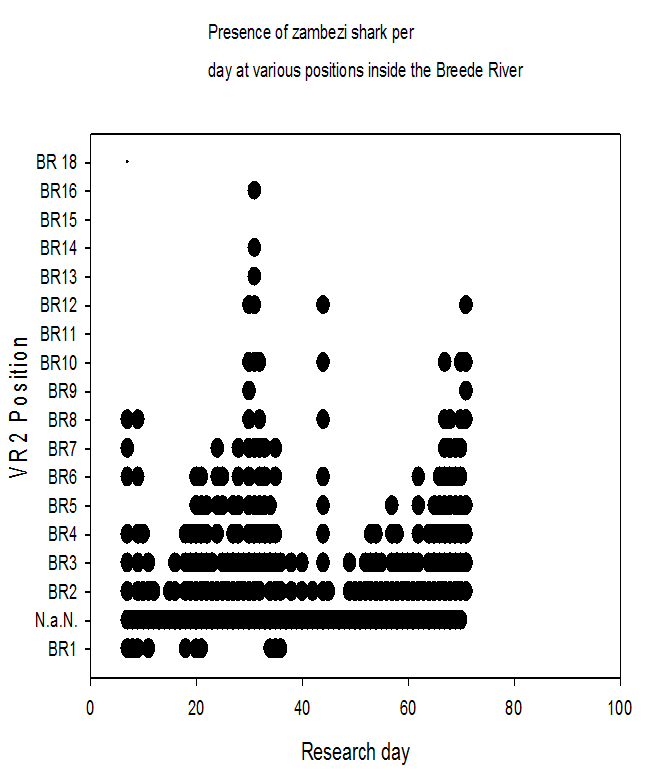The secret lives of the Breede River Zambezi sharks & their prey
Nine months after our research team first deployed a series of 18 acoustic receivers in South Africa’s Breede River we are finally gaining much-anticipated insight into the secret lives of a Zambezi shark and its favourite prey, the spotted grunter. Although we have spent over 400 hours manually tracking the movement of tagged sharks in the river, this is the first time we have been able to passively monitor shark movement as a function of environment (tide, temperature, salinity) and determine whether relationships exist between the movement of this apex predator and its natural food source. Yet 9 months of telemetry data is really just a teaser, and any fisheries scientist will tell you long-term data (data collected over multiple seasons and multiple years) is the key to understanding fish behaviour and ecology and developing meaningful management strategies.
So although we now have a better understanding of how 13 tagged grunter and one tagged shark use the river system, there are so many questions remaining. These include long-term habitat use patterns, the effect of seasonal change on fish behaviour, how increased fishing effort affects fish movement, and how micro-scale ecosystem changes (due to anthropogenic impacts) affect behavioural ecology.
60 days of passive telemetry data sheds light into how a sexually immature male Zambezi shark uses the Breede River. Preliminary analyses indicated the majority of time was spent 18-20km upriver at the upper part of our acoustic array system.
Since our aim is to better understand the spatio-temporal dynamics between fishes, fisheries and environment in the Breede – and determine how fisheries and habitat management protocols will improve conservation – many more data are required. And so, every three months, our research team will return to the river to retrieve the receivers, download data, tag additional fish, and redeploy the system in the hopes that we will – when this aspect of our telemetry study wraps up in 2015 – be armed with the specific tools and information required to implement best-practice management strategies for a group of charismatic, sensitive indicator fish species in the Breede River, adjacent river systems and a surrounding network of marine and estuarine protected areas.
Combined with continued outreach and education initiatives to promote community involvement in the research project – and ensure the long-term success of any implemented conservation and management measures – our team excitedly looks forward to our November field trip when our next data download and tagging expedition will help us shed additional light into the secret lives of sharks and their prey.

